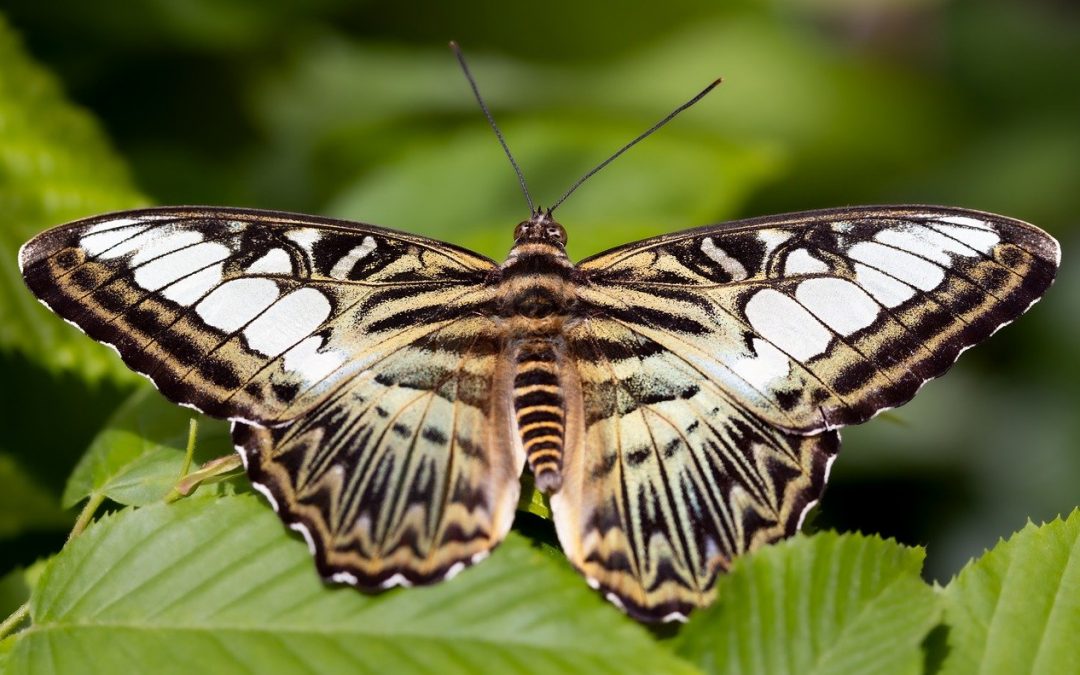Designing an indoor butterfly garden is a captivating way to bring the beauty and wonder of nature inside your home. Butterflies not only enhance the aesthetic appeal of your space but also contribute to a healthy indoor ecosystem. In this article, we’ll guide you through the essential steps to create a thriving indoor butterfly garden, from selecting the right plants to maintaining a suitable environment for these delicate creatures.
Contents
Choosing the Right Space for Your Butterfly Garden
The first step in designing an indoor butterfly garden is selecting the ideal location within your home. Butterflies need specific conditions to thrive, and your chosen space will play a crucial role in the success of your garden.
Natural Light and Temperature
Butterflies are cold-blooded insects, which means they rely on external sources of heat to regulate their body temperature. Therefore, it’s essential to choose a location that receives plenty of natural sunlight. A south-facing window is ideal as it provides consistent light throughout the day. If natural light is limited, consider using full-spectrum grow lights to mimic sunlight.
In terms of temperature, butterflies prefer a warm environment. The room temperature should ideally be between 75°F and 85°F (24°C to 29°C). Avoid placing your garden near drafts, vents, or areas with fluctuating temperatures, as this can stress the butterflies and hinder their development.
Space Considerations
While butterflies don’t require vast amounts of space, they do need enough room to fly and explore. A small conservatory, sunroom, or even a dedicated corner in a well-lit room can serve as a perfect spot. Ensure the area is free from hazards such as ceiling fans or other moving objects that could harm the butterflies.
If space allows, consider adding a small water feature, such as a shallow dish with stones, where butterflies can drink and hydrate. This will create a more natural environment and support the overall health of your indoor garden.
Selecting the Right Plants
Plants are the foundation of your indoor butterfly garden. They provide food, shelter, and breeding grounds for butterflies. When selecting plants, it’s essential to choose species that will thrive indoors and support the entire lifecycle of butterflies, from egg to caterpillar, chrysalis, and adult.
Host Plants
Host plants are where butterflies lay their eggs and where caterpillars will feed after hatching. Different butterfly species have specific host plants, so it’s important to research the types of butterflies you want to attract and their preferred host plants. Some common host plants include:
- Milkweed: Essential for monarch butterflies.
- Parsley, Dill, and Fennel: Popular for swallowtail butterflies.
- Nettles: Favored by red admiral and peacock butterflies.
Host plants should be placed in accessible areas of your garden, allowing butterflies to easily lay their eggs and caterpillars to find their food source.
Nectar Plants
Nectar plants provide the primary food source for adult butterflies. These plants should have brightly colored, tubular flowers that are rich in nectar. Some excellent indoor nectar plants include:
- Lantana: Known for its vibrant colors and continuous blooms.
- Verbena: A hardy plant that produces small, clustered flowers.
- Zinnias: These are easy to grow and come in various colors that attract butterflies.
- Pentas: These star-shaped flowers are perfect for small spaces and are highly attractive to butterflies.
When arranging your plants, place nectar plants in prominent areas where butterflies can easily access them. Grouping several nectar plants together can create a visually appealing display and a more inviting environment for butterflies.
Creating a Suitable Habitat
Beyond light and plants, creating a suitable habitat involves maintaining the right humidity levels, providing water sources, and ensuring safety for both butterflies and plants.
Humidity Control
Butterflies thrive in environments with moderate humidity. Aim for a humidity level of around 60-70%. Too much humidity can lead to mold growth on plants, while too little can cause dehydration in butterflies. To maintain the right balance, consider using a humidifier in the room, especially during dry seasons.
You can also increase humidity naturally by placing trays of water or misting the plants regularly. Be cautious not to overwater the plants, as standing water can attract pests or cause root rot.
Water Sources
Butterflies drink water, but they also absorb nutrients from wet soil or sand in a process called “puddling.” To mimic this in your indoor garden, place a shallow dish filled with wet sand, soil, or gravel in your garden. Add a pinch of salt or minerals to the water to simulate the natural conditions that butterflies find appealing in the wild.
Safety Measures
To protect your butterflies, avoid using any chemical pesticides or fertilizers in your garden. Opt for organic, butterfly-safe products instead. Also, ensure the garden is free from predators like house cats or other pets that might be tempted to chase or harm the butterflies.
If your garden includes a window, make sure it is secured with a fine mesh or screen to prevent butterflies from escaping or getting injured.
Maintaining Your Indoor Butterfly Garden
Maintaining an indoor butterfly garden requires regular care and attention to ensure that both the plants and butterflies remain healthy. Here’s how you can keep your garden flourishing:
Plant Care
Indoor plants need regular watering, but be mindful of the specific needs of each plant species. Overwatering can be just as harmful as under-watering. Regularly check the soil moisture level and water accordingly. Use a well-draining potting mix to prevent water from pooling at the roots.
Pruning is also essential to keep the plants healthy and encourage new growth. Remove any dead or yellowing leaves, and trim back overgrown stems to maintain the plant’s shape and size.
Fertilizing your plants with an organic, butterfly-safe fertilizer can help them thrive. However, use fertilizers sparingly to avoid harming the butterflies.
Butterfly Care
Butterflies generally require minimal care once their environment is established. However, there are a few things to keep in mind:
- Feeding: While nectar plants provide food, you can supplement their diet with a homemade nectar solution. Mix one part sugar with four parts water and place it in a shallow dish with a sponge or cloth to prevent butterflies from drowning.
- Cleaning: Keep the garden clean by removing any waste, dead leaves, or decayed plants regularly. This helps prevent mold and pest infestations.
- Lifecycle Management: If you’re breeding butterflies, monitor their lifecycle closely. When caterpillars form chrysalises, ensure they have a safe place to hang. Once the butterflies emerge, give them time to dry their wings before they start flying.
Common Challenges and Solutions
Even with careful planning, you may encounter some challenges in maintaining your indoor butterfly garden. Here are common issues and how to address them:
- Pests: Aphids, mites, and other pests can be a problem in indoor gardens. Introduce natural predators like ladybugs, or use neem oil as an organic pesticide.
- Diseases: Fungal diseases can occur in high-humidity environments. Ensure good air circulation and avoid overcrowding plants. If disease appears, remove affected parts promptly.
- Butterfly Mortality: Butterflies have a short lifespan, typically only a few weeks. To sustain your garden, consider breeding butterflies or periodically introducing new ones from reputable sources.
Enhancing the Aesthetic Appeal
While the primary focus of your indoor butterfly garden is to create a habitat for butterflies, it’s also important to design a space that is visually appealing. Here are some tips for enhancing the aesthetic appeal of your garden:
Color Coordination
Butterflies are attracted to bright colors, so choose a color scheme that not only appeals to them but also complements your interior decor. Consider using a mix of warm colors like reds, oranges, and yellows, which are particularly attractive to butterflies, along with cooler tones like blues and purples for contrast.
Garden Layout
The layout of your garden should be both functional and pleasing to the eye. Use different levels by placing taller plants at the back and shorter ones in the front. This not only creates depth but also makes it easier for butterflies to navigate the space.
Incorporate decorative elements such as small stones, sculptures, or colorful pots to add personality to the garden. These can also serve practical purposes, like providing landing spots for butterflies.
Seasonal Adjustments
Adjust your garden to reflect the changing seasons. Rotate plants in and out depending on their blooming periods, or add seasonal decorations to keep the garden fresh and interesting throughout the year. This can also help maintain the interest of butterflies, as different plants will attract them at different times.
Conclusion
Designing an indoor butterfly garden is a rewarding project that brings the beauty of nature into your home while providing a safe haven for these delicate creatures. By carefully selecting the right plants, creating a suitable habitat, and maintaining the garden with care, you can enjoy the presence of butterflies year-round. With a little creativity and attention to detail, your indoor butterfly garden can be both a sanctuary for butterflies and a stunning addition to your home.


